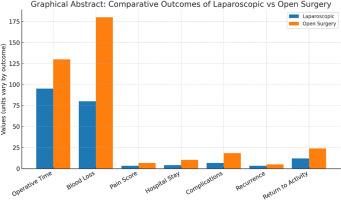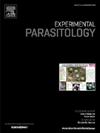乌兹别克斯坦腹腔镜手术治疗肝包虫病:微创手术的结果和实施挑战
IF 1.6
4区 医学
Q3 PARASITOLOGY
引用次数: 0
摘要
由细粒棘球绦虫引起的肝棘球蚴病仍然是乌兹别克斯坦的一个重大公共卫生问题,特别是在农村农业社区。虽然开放手术传统上是主要的治疗方法,但它与恢复时间较长和并发症发生率较高有关。本研究旨在评估乌兹别克斯坦腹腔镜手术治疗肝包虫病的安全性、有效性和临床结果。对2020年至2024年间在三家三级医疗中心接受腹腔镜手术(n = 60)或开放式手术(n = 60)的120例患者进行了回顾性队列分析。关键参数包括手术时间、术中出血量、术后疼痛(VAS)、住院时间、并发症发生率和复发率。腹腔镜组明显缩短手术时间(95 vs 130分钟;p < 0.001),减少出血量(80 vs 180 mL; p < 0.001),降低疼痛评分(3.2 vs 6.7; p < 0.001),缩短住院时间(4.1 vs 10.3天;p < 0.001)。腹腔镜组并发症发生率明显低于腹腔镜组(6.7% vs. 18.3%, p = 0.045),术后1年复发率无显著差异(3.3% vs. 5.0%, p = 0.65)。这些发现表明,腹腔镜手术在安全性、恢复和资源利用方面比开放手术有实质性的优势。本文章由计算机程序翻译,如有差异,请以英文原文为准。

Laparoscopic surgical treatment of liver echinococcosis in Uzbekistan: Outcomes and implementation challenges of minimally invasive surgery
Liver echinococcosis, caused by Echinococcus granulosus, remains a significant public health concern in Uzbekistan, particularly in rural agricultural communities. While open surgery has traditionally been the primary treatment, it is associated with prolonged recovery and higher complication rates. This study aims to evaluate the safety, efficacy, and clinical outcomes of laparoscopic surgery in managing liver echinococcosis in Uzbekistan. A retrospective cohort analysis was conducted on 120 patients who underwent either laparoscopic (n = 60) or open surgery (n = 60) between 2020 and 2024 at three tertiary medical centers. Key parameters included operative time, intraoperative blood loss, postoperative pain (VAS), hospital stay, complication rates, and recurrence. The laparoscopic group demonstrated significantly shorter operative time (95 vs. 130 min; p < 0.001), reduced blood loss (80 vs. 180 mL; p < 0.001), lower pain scores (3.2 vs. 6.7; p < 0.001), and shorter hospital stays (4.1 vs. 10.3 days; p < 0.001). Complication rates were also significantly lower in the laparoscopic group (6.7 % vs. 18.3 %; p = 0.045), while recurrence rates showed no significant difference after one year (3.3 % vs. 5.0 %; p = 0.65). These findings suggest that laparoscopic surgery offers substantial advantages over open surgery in terms of safety, recovery, and resource utilization.
求助全文
通过发布文献求助,成功后即可免费获取论文全文。
去求助
来源期刊

Experimental parasitology
医学-寄生虫学
CiteScore
3.10
自引率
4.80%
发文量
160
审稿时长
3 months
期刊介绍:
Experimental Parasitology emphasizes modern approaches to parasitology, including molecular biology and immunology. The journal features original research papers on the physiological, metabolic, immunologic, biochemical, nutritional, and chemotherapeutic aspects of parasites and host-parasite relationships.
 求助内容:
求助内容: 应助结果提醒方式:
应助结果提醒方式:


